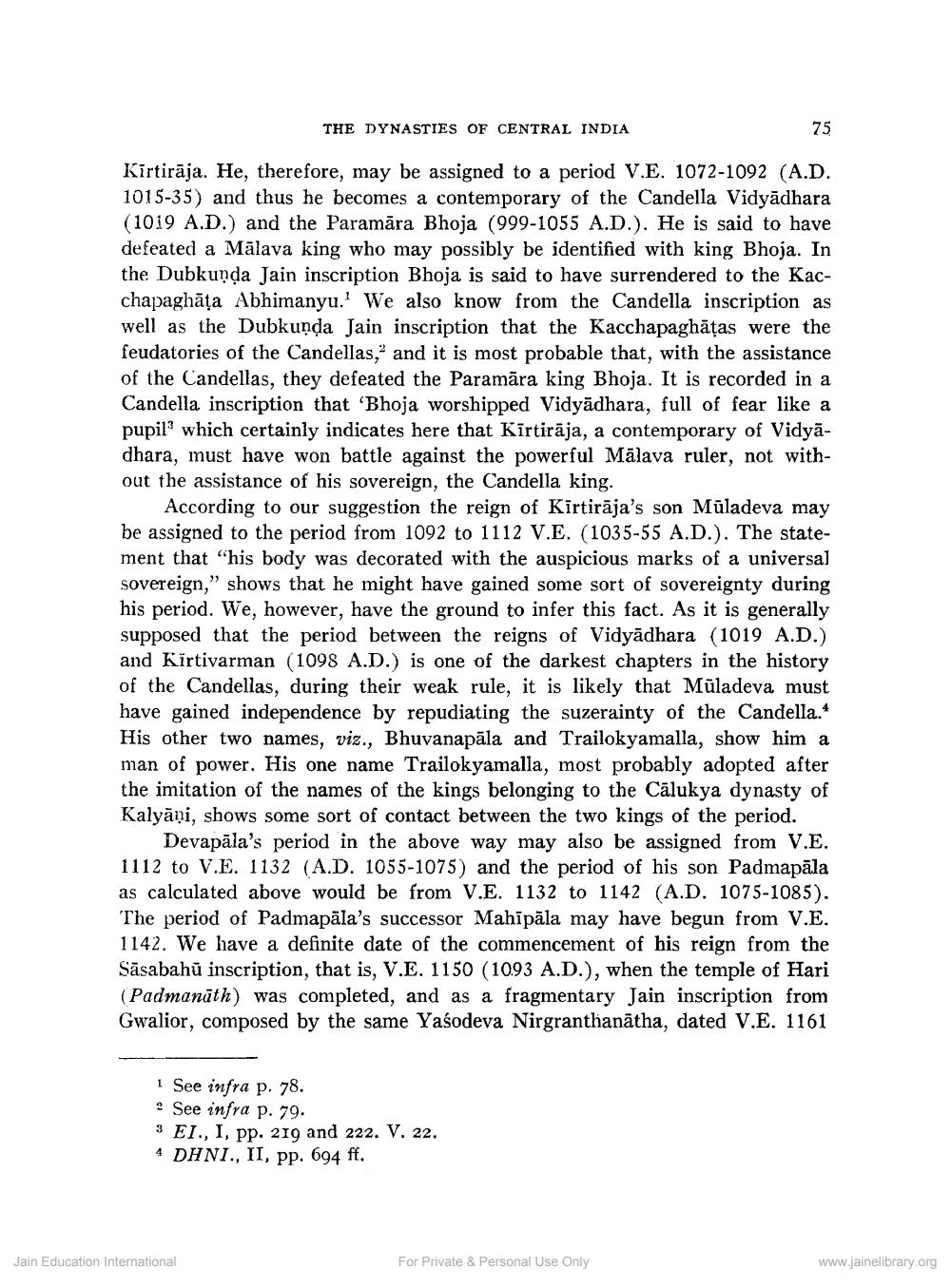________________
THE DYNASTIES OF CENTRAL INDIA
7
Kirtirāja. He, therefore, may be assigned to a period V.E. 1072-1092 (A.D. 1015-35) and thus he becomes a contemporary of the Candella Vidyādhara (1019 A.D.) and the Paramāra Bhoja (999-1055 A.D.). He is said to have defeated a Mālava king who may possibly be identified with king Bhoja. In the Dubkunda Jain inscription Bhoja is said to have surrendered to the Kacchapaghāța Abhimanyu. We also know from the Candella inscription as well as the Dubkunda Jain inscription that the Kacchapaghāțas were the feudatories of the Candellas," and it is most probable that, with the assistance of the Candellas, they defeated the Paramāra king Bhoja. It is recorded in a Candella inscription that 'Bhoja worshipped Vidyādhara, full of fear like a pupil' which certainly indicates here that Kīrtirāja, a contemporary of Vidyādhara, must have won battle against the powerful Mālava ruler, not without the assistance of his sovereign, the Candella king.
According to our suggestion the reign of Kirtirāja's son Mūladeva may be assigned to the period from 1092 to 1112 V.E. (1035-55 A.D.). The statement that "his body was decorated with the auspicious marks of a universal sovereign," shows that he might have gained some sort of sovereignty during his period. We, however, have the ground to infer this fact. As it is generally supposed that the period between the reigns of Vidyādhara (1019 A.D.) and Kirtivarman (1098 A.D.) is one of the darkest chapters in the history of the Candellas, during their weak rule, it is likely that Müladeva must have gained independence by repudiating the suzerainty of the Candella. His other two names, viz., Bhuvanapāla and Trailokyamalla, show him a man of power. His one name Trailokyamalla, most probably adopted after the imitation of the names of the kings belonging to the Cālukya dynasty of Kalyāņi, shows some sort of contact between the two kings of the period.
Devapāla's period in the above way may also be assigned from V.E. 1112 to V.E. 1132 (A.D. 1055-1075) and the period of his son Padmapāla as calculated above would be from V.E. 1132 to 1142 (A.D. 1075-1085). The period of Padmapāla's successor Mahīpāla may have begun from V.E. 1142. We have a definite date of the commencement of his reign from the Sāsabahū inscription, that is, V.E. 1150 (1093 A.D.), when the temple of Hari (Padmanāth) was completed, and as a fragmentary Jain inscription from Gwalior, composed by the same Yaśodeva Nirgranthanātha, dated V.E. 1161
1 See infra p. 78. 2 See infra p. 79. 3 EI., I, pp. 219 and 222. V. 22. 4 DHNI., II, pp. 694 ff.
Jain Education International
For Private & Personal Use Only
www.jainelibrary.org




